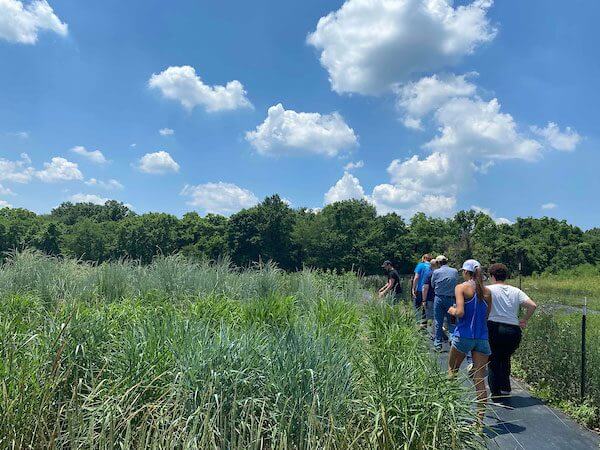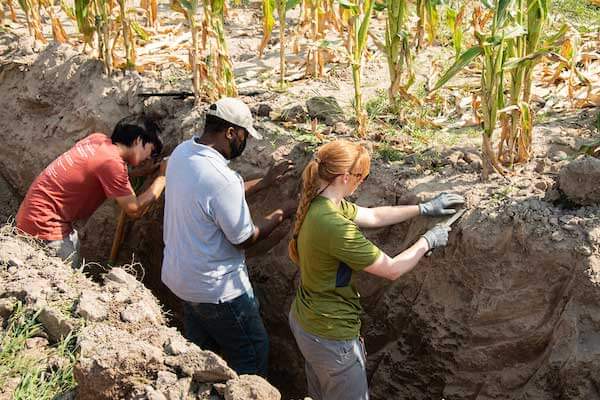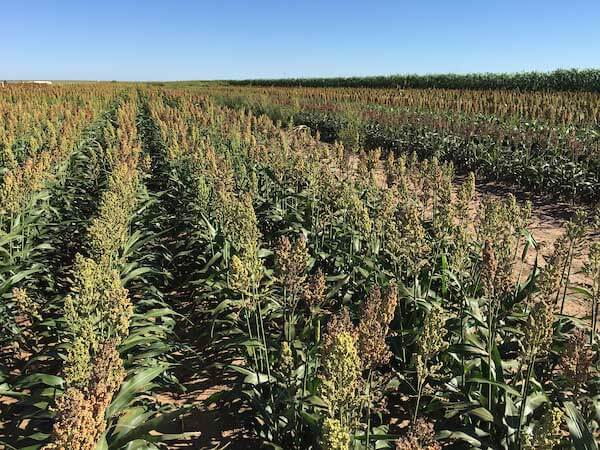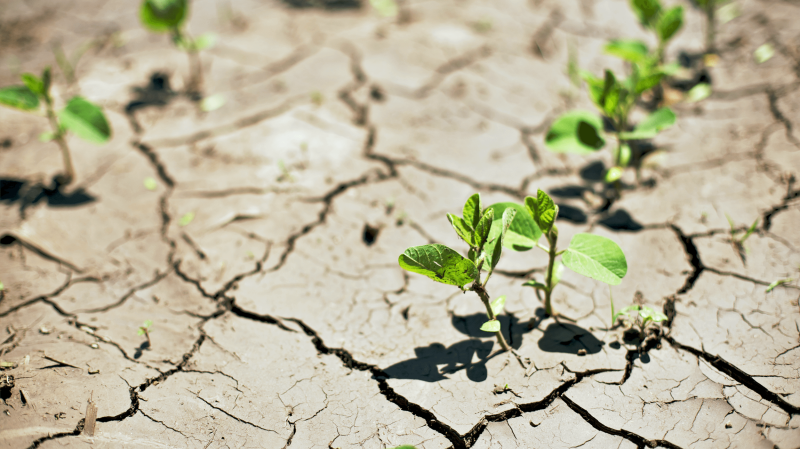Modern agriculture has to produce more food than ever to feed our growing planet, which requires the use of synthetic fertilizers and pesticides to meet demand. These widespread practices are expensive for farmers while also contributing to climate change through emitting greenhouse gasses.
Furthermore, farmers are particularly vulnerable to the effects of our changing climate. Droughts, flooding and longer fire seasons are posing increasingly serious challenges to farmers and ranchers around the world. Science and technology to address challenges at the nexus of agriculture and the environment have never been more important.
At the Donald Danforth Plant Science Center researchers and their collaborators are working on major new initiatives to mitigate climate change through carbon sequestration and the lowering of greenhouse gas emissions from agriculture, and the adaptation of crops to adjust to, or live with, climate change that has already been set in motion.
Climate change mitigation
New Roots for Restoration Biology Integration Institute (NRR-BII). This $12.5M, multi-institutional initiative led by Allison Miller, PhD, seeks to understand plant traits, plant communities, and the soil ecosphere to restore natural and agricultural ecosystems. A major driver of NRR-BII is development of effective, scalable ways to better capture carbon dioxide, the most abundant greenhouse gas, and sequester it in soil. Consider that a tall grass prairie can sequester 0.3 to 1.7 metric tons of carbon from the atmosphere each year. This work will help researchers apply what we can learn from natural systems to move towards climate resiliency.

Harnessing Plants Initiative (HPI). Led by plant biologists at the Salk Institute, this initiative now includes a $6.2M program led by Nadia Shakoor, PhD, at the Danforth Center to develop sorghum with more carbon sequestration potential. Sorghum has high appeal for capturing and storing atmospheric carbon underground because it’s also relatively drought tolerant. Nadia’s team is investigating the genetics and phenotypes of sorghum needed for improved varieties with potential to sequester more carbon.
Subterranean Influences on Nitrogen Cycling (SINC) The SINC Center, currently led by Rebecca Bart, PhD, Ivan Baxter, PhD, Doug Allen, PhD, Christopher Topp, PhD and the Data Science team, are using microbes and plant genetics to lower the need for synthetic nitrogen fertilizer. A major motivation is the need to lower emissions of nitrous oxide gas, which has nearly 300-times more heat-trapping potential than an equivalent amount of carbon dioxide.1 Seventy-five percent of total nitrous oxide emissions is due to nitrogen fertilizer and other agricultural practices. The SINC Center seeks to develop technology that lowers the need for synthetic fertilizer by 12% without the loss of crop productivity. Reducing chemical nitrogen fertilizer in the U.S. by 12% would be equivalent to taking 10 million cars off the road.

Climate change adaptation
Understanding Plant Responses to Environmental Challenges. This NSF-funded, $3M “Rules of Life” project involves teams led by Keith Slotkin, PhD, Malia Gehan, PhD, Blake Meyers, PhD, Sona Pandey, PhD, Chris Topp, PhD and collaborators, and seeks to understand how plants will respond to environmental challenges when carbon dioxide levels are higher. The project will build models of how elevated carbon dioxide and stress affect growth of diverse plant species, and how those changes may be inherited (epigenetically) in subsequent generations. As the team points out, “Understanding plant responses to environmental stress is important to secure our future…interest in maintaining agricultural productivity and preserving the environment.”
Mechanisms Underlying Abiotic Stress Resilience in Sorghum. Andrea Eveland (Lead PI) and Todd Mockler teams and collaborators are exploring the genetic basis of drought tolerance in sorghum in this Department of Energy-funded, $2.7M project. It involves phenotyping experiments in the Arizona desert to measure effects of drought in genetically distinct varieties of sorghum. In many agricultural regions of the world, future climates will be both hotter and drier, with more frequent extreme conditions like prolonged drought. This work will enable crop breeders to deliver varieties that better tolerate these conditions.

Climate Adaptation Research Across the Center. This is a consistent theme around the Center. Ru Zhang’s team works hard to understand how photosynthesis is affected by elevated temperatures. Ivan Baxter’s group is figuring out how plant genome composition affects growth and nutritional status in different environments. Sona Pandey’s and Dmitri Nusinow’s groups aim to discern how plants biochemically sense and respond to environmental changes and stress, while Malia Gehan’s and Noah Fahlgren’s teams are delivering better, more useful ways to measure effects of stress. And Toby Kellogg’s group is analyzing natural variation in wild species for traits with relevance to climate adaptation.
Agriculture must offer significant solutions to climate change through both mitigation and adaptation, but both will require major investments in scientific research and technology development.
Notes:
- EPA “Overview of Greenhouse Gases”, https://www.epa.gov/ghgemissions/overview-greenhouse-gases#nitrous-oxide































